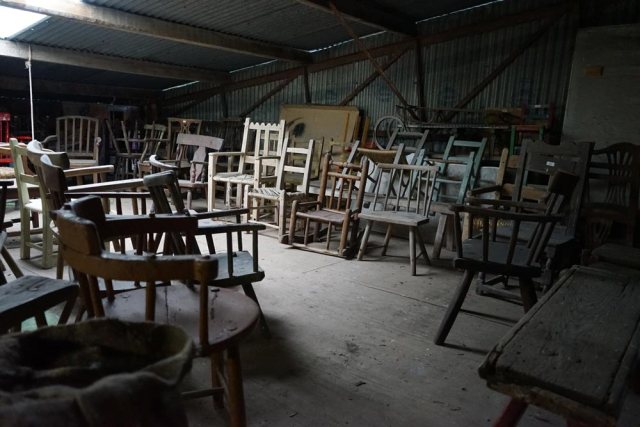
The highlight of my trip to the Republic of Ireland earlier this month was spending the day with Mark Jenkinson, a chair collector and cider maker in Slane.
Mark generously invited Lucy and me to spend the day looking at the chairs he had stored in his barn, to see the cider-making process at work and to eat a delicious “Spanish/Irish” stew for the midday meal.
The chair collection was staggering. I saw more vernacular stick chairs in one day than I have seen in the last 10 years combined. These were unrestored examples that Mark had collected during a life-long fascination with vernacular architecture and furniture, including six Gibson chairs.
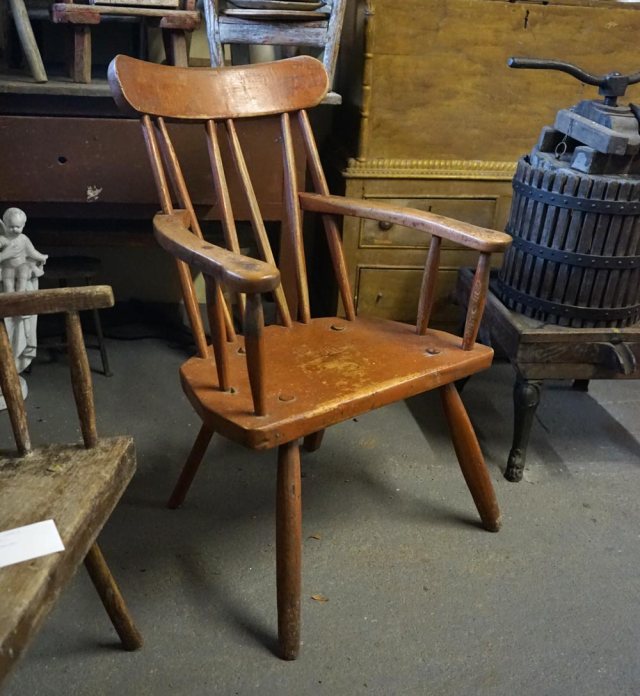
“I’ve always been into old shit,” he said. “The older and wonkier the better. I started with vernacular architecture – Irish vernacular architecture. And part and parcel with that is vernacular furniture. And at first I bought antiques without a lot of focus.
“Then I was at an auction about 20 years ago and there were six Gibson chairs. They just jumped out at me.
“I bought a lot of stuff, perhaps the largest collection in the country – 100 to 150 chairs. I’m down to 60 or 70 now – not all stick chairs. Maybe half are stick chairs. What I have left is stuff that was too close to my heart to sell and stuff that didn’t sell at auction (in 2014). The best and worst you could say.”
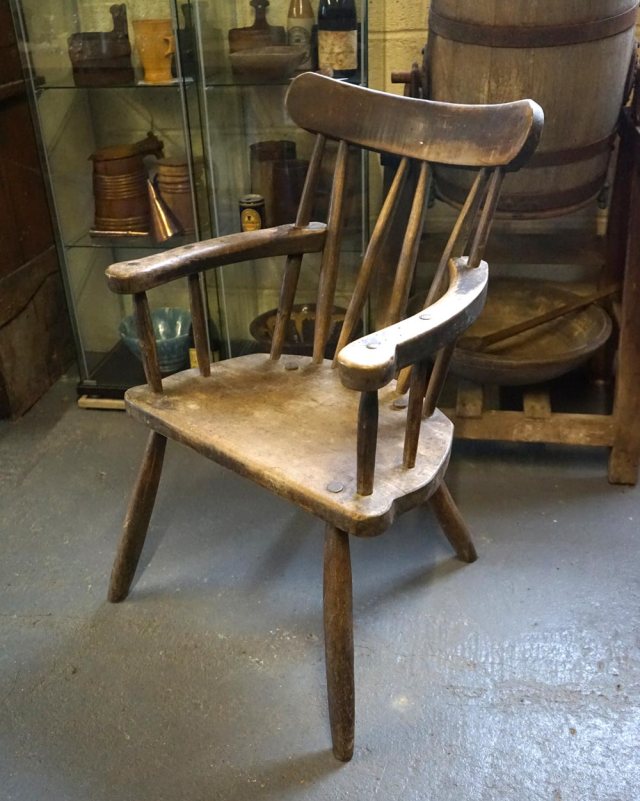
The Gibson Chair
We don’t know a lot about Gibson chairs from official records as of yet. Mark says there’s a photo of a chairmaker – perhaps Mr. Gibson himself – taking the chairs to market circa 1880. But most of what we know about the chairs comes from the archaeological record.
They are stout and dramatic chairs, with a remarkable lean to the backrest of the chair – about 25°. The seats are wide.
Mark thinks they likely were made for the sturdy local farmers who would appreciate the comfort and solidity of a Gibson chair after a long day of work.
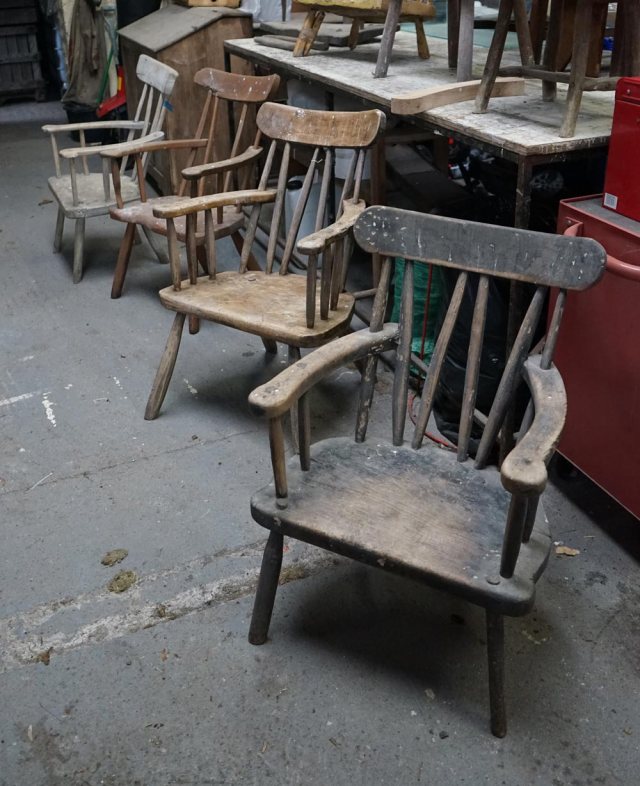
Despite the radical lean of the chair’s back, the Gibson doesn’t sit radically different. It’s not at all like a recliner. You can sit and have a great conversation in one. I know this because I do it everyday with the sorta-Gibson I’m sitting in right now.
Earlier this year I built a prototype of a Gibson based on photos (hundreds of photos) I had harvested from books and the internet. Mark helped guide me on the key points, and my Gibson sits almost exactly like the originals I sat in earlier this month.
But seeing the real thing. Touching it all over and simply getting a sense of it – that has changed the way I’m going to make my next set of Gibsons.
What’s different? Well the legs are certainly riven. All the components are different in cross-section and many feel like riven material – rough triangles, ovals, squares, slight rectangles. All with rounded arrises and dead-straight grain. Likely ash (Fraxinus excelsior).
The sticks are likely ash as well, Mark says. The seats, arms and crest are usually sycamore (Acer pseudoplatanus), which is known as sycamore maple in this country. It’s not like the sycamore in our country. It’s in the same genus as our soft maple or red maple and works the same way. Mark says he’s also seen elm seats.
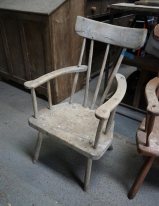

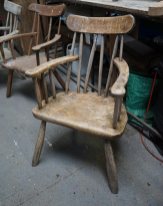
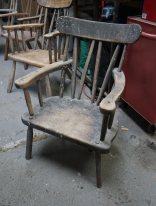
In one room of Mark’s barn, he kept two museum-quality examples of Gibson. One had the same radical lean as mine. The other had a more upright back. They both sat extremely well. I measured these carefully and have been figuring out the design patterns embedded in each one. These chairs were likely made commercially. But there is a lot of handwork and variation to them. They were not manufactured.
In the next room, Mark had four Gibsons in various original conditions. Seeing unrestored chairs is a goldmine for a chairmaker. It allows you to see what held and what didn’t. The weaknesses and strengths of the designs are laid bare.
Examining the details was eye-opening. The way the back sticks locked to the arms is a key feature of these chairs, as is the oval shape of the stick that passes through the arms. These features tension the components above the seat.
What’s Next
After a long day of looking at chairs, Mark and I agreed that the Gibson chair is one of the most important unsung vernacular forms out there. And we are going to work together to change that.
Next month, I’m going to build a run of these chairs, and Narayan Nayar has agreed to photograph the process. Mark has agreed to be a co-author or consultant on the project, and I think we are headed for a very interesting book on these chairs.
— Christopher Schwarz
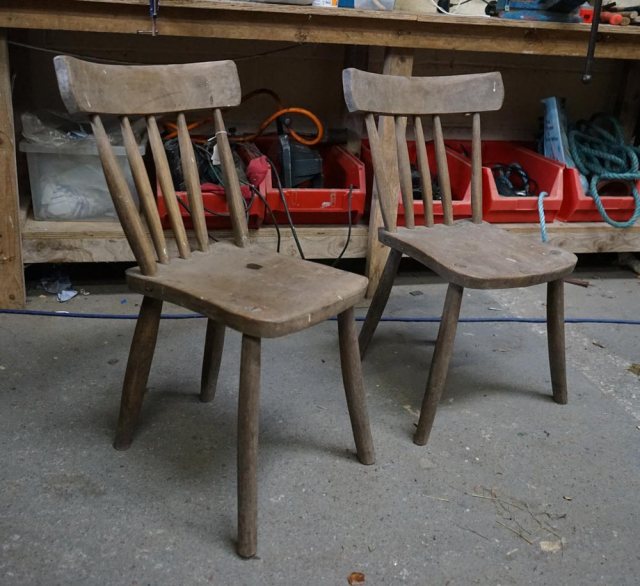
P.S. In case you were wondering, Mark’s cider is fantastic. His Cockagee cider has a pure apple essence. Not too sweet (like American ciders). Just a delight to drink. It’s a shame we can’t get it in the United States. But it’s also a good thing because I’d probably drink too much of it.